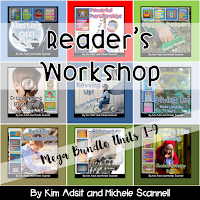In Pictures and In Words
This week’s chapter, Precision and Detail, demonstrates how details really do matter. You might of heard, don’t sweat the small stuff, but this chapter shows how details help the reader really understand the mood the writer and illustrator are trying to convey. I always tell my kiddos, authors and illustrators do things in a way to let us know the things they would tell us if they were standing right next to us. But since they aren’t, they must use their words and illustrations to make meaning. Teaching Small Moments in Writing Workshop was always a challenge to me. Children often didn’t have the vocabulary necessary to express the detail we were looking for. Next year, Megan and I are really going to use illustrations as a way in the door to have our children illustrate their small moments.
A few quotes from Katie Wood Ray that I really liked are:
“A detailed description is not about the quantity of detail, but rather the quality.”
“A habit of noticing and paying attention is essential to good writing and good illustrating, especially when it comes to noticing details."
And she quotes another source, Escaping into the Open: The Art of Writing True, “”To really see something is to let yourself move beyond the narrow place of words and into a 360 degree kind of noticing.”
Technique 13: Facial expressions and gestures are meaningful details. “For a writer or illustrator to truly bring a scene to life, attending to the details of gestures an d expression is critical.” In the story “Bark George”, the reader is keenly aware of how the mother is feeling about her puppy George! Oh No! When I went to get my “Bark, George” book to scan the pictures, I remembered it is packed in my Vegas bag! I am using it in one of my presentations! Go see photos on Kathleen’s Growing Kinders post from last week! Technique 14: The physical detail of characters—clothing, hairstyles, adornments—are revealing. As I was reading about this technique, I immediately thought of Tacky, the Penguin! Children are keenly aware of the fact that Tacky is different from the other penguins—both by the words used by the author and the way the illustrator has dressed him! This technique became very obvious one day while my children were writing. Not sure exactly why, but the children were all drawing a picture of me! As I walked around the room, I noticed that almost every child had drawn me with the black square earrings. I was amazed that they were paying such close attention to the details of my clothing. When I mentioned it, a sweet little cherub said, “You wear the same ones every day!” Oh well!

Technique 21: Creating the Illusion of Sound with Detail. When I went and got my Tacky book to scan the picture it was crazy how many detail techniques I was able to find. Here is one that shows just how awful Tacky does sound when he tries to sing!
Technique 17: Showing the Effects of Weather on a Scene—details can show the effect of weather on a scene. I think I read “The Napping House” a zillion times and never really paid attention to the “window”! By looking at the window, the illustrator has let us in on why the family is napping. Have you never paid attention either? Go look and see what I mean!
Technique 18: Crafting Details from the World of People—Using details from the world of people brings authenticity to a setting. Here Ray tells us about using environmental print in our writing and illustrations. This reminded me of Santiago, a new immigrant from Mexico. Here is a writing sample of his from the end of the year. Notice the “Walmart star”?
Finally, I returned to “Dory Story” from last week’s post. These two illustrations show the illustrator using several techniques.
Technique 21: Creating the Illusion of Sound with Detail.
Technique 13: Facial expressions and gestures are meaningful details.
Technique 20: Creating the Illusion of Motion with Detail.
Books discussed in this post are avaliable on the Clever School Teacher website.
Click the image to see the book.










































































